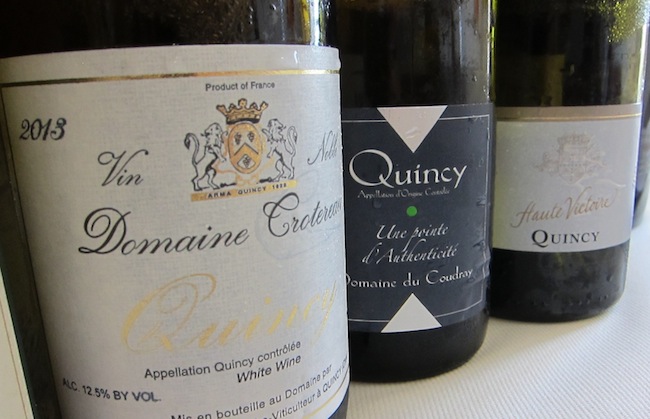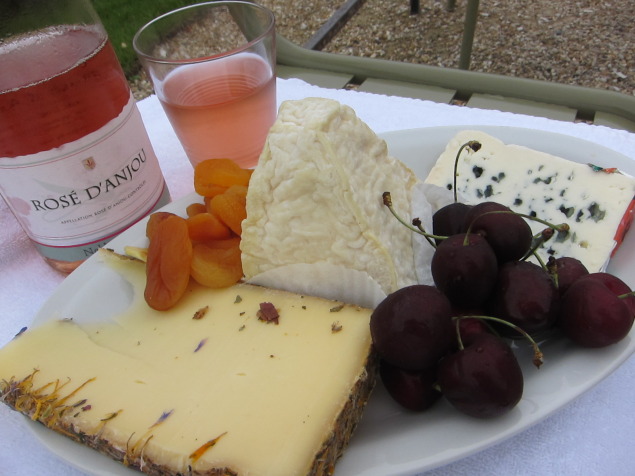
The largest, and one of the coolest, wine regions of France also happens to produce some of the most approachable, easy drinking wines in the world. And they are anything but boring. The wines of the Loire Valley in Central France are racy, acid filled and lively. They burst with character and complexity. Each of the white wines of the regions wraps citrus, stone fruit, white flowers, and tropical fruit, around bracing minerality, earthiness, smokiness, wet stone and steely characteristics that demonstrate the importance that soil and terroir (the slope of the land, the altitude, the direction of sunlight, the direction of the wind, etc.) have on wine, especially in Loire.
The Loire Valley region is known as the “Garden of France” thanks to an abundance of vineyards, orchards, and fields of growing grains and vegetables. Stretching almost 185 miles long, the region starts about an hour and a half outside of Paris in Central France, and runs down the Loire River through historic cities such as Amboise, Angers, Chinon, Orléans, Saumur, and Tours. The wines of the region range from zippy, mineral and lemon filled Melon de Bourgogne, or Muscadet, near the city of Nates by the Atlantic Ocean; inland near the Cher River to Vouvray and Saumur where still dry and off dry, and sparkling styles of Chenin Blanc dominate; to the middle of the country where lively gooseberry, flint, stone fruit, herb and umami filled Sauvignon Blanc thrives from Reuilly, Sancerre and Quincy. I had a chance to visit the region recently, traveling as a guest of the Wines of Central Loire and InterLoire, tasting their white wines from one end of the region to the other, soaking in the history of the land that echos through the vineyards and into their wines.

Most of the wineries in Loire are family owned and operated, many on their 4th or 5th generation. However, some have been farming their vineyards longer as they may have been working their land since before the French Revolution in the late 1700s, growing their produce for either the nobility or the church. Pre-Revolution one of the most humble jobs in France was that of a vigneron, or winemaker. After the revolution, these became prized positions, with families developing vineyards on land that was once used to graze cattle or grow grains. Though individual winemakers may not have held historical notoriety in the region, the wines certainly have for centuries.
The first mention of Loire wines from Touraine came in 582. But, most notably, the wine earned recognition early on in 1154 when King Henry II, Duke of Anjou and King of England served Loire wines to his Royal English court. Though the Revolution brought independent positions for former workers of the court and church, it also brought industrial expansion, with wines from all over France becoming readily available to both the elite of Paris, as well as the export markets of Britain, Belgium, The Netherlands, etc. This industrial expansion brought a required improvement on the overall quality of the wines throughout the Loire. Shortly after the Revolution, the vine disease phylloxera hit the region as well, wiping out most of the historic vines. Though devastating, the required replanting allowed for changes in vineyards, with vignerons choosing varieties that were better suited for the soils and terroir of the region, while also utilizing cleaner, greener farming methods. In 1936, when the first AOC (appellation d’origine contrôlée or controlled designation of origin) Sub-regions of the Loire were developed, it was a testament to the quality of the fruit. These sub-regions were Sancerre, Vouvray, Muscadet, and Quincy. Through the years additional sub-regions, like Pouilly-Fume, Pouilly sur Loire, Saumur, Anjou and dozens more, have earned the AOC designation.
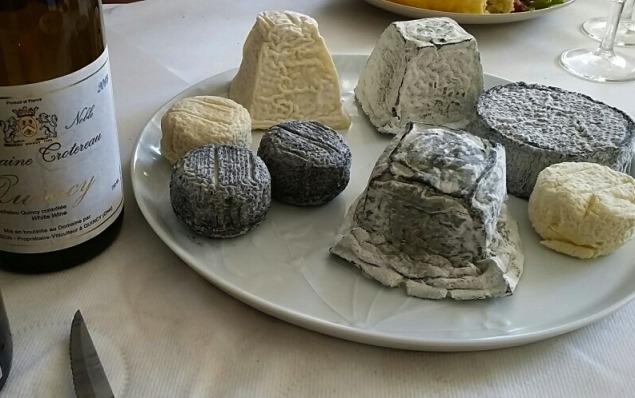
Food, like the wines of the region, is clean, fresh, and balanced. Local bistro menus are filled with seafood and river fish, pork and beef, salads, orchard fruit like sweet Loire cherries, locally grown grains and mounds of tangy goat cheese. One favorite from this area is Crottin de Chavignol, a circular shaped, soft rind goat cheese from the village of Chavignol served either fresh and creamy, or slightly aged developing robust earthy, musky notes. Sliced and baked just slightly on a crusty baguette and served with your favorite Loire wine, the French paradox is revealed in all its joyful decadence. If you prefer to sip your wine on its own, no problem in Loire. The present acidity in the wines keeps them light and fresh, yet the ripeness of the fruit keeps them balanced, making these perfect wines to enjoy on their own or with the fresh regional cuisine.
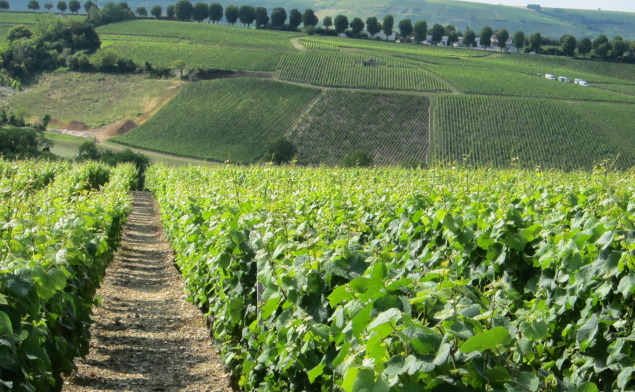
If you are new to understanding the wines of Loire, we will start closest to Paris in Central France with Sancerre and Pouilly-Fume, perhaps the most popular wines from Loire, made from the Sauvignon Blanc variety. The popularity of Sauvignon Blanc as an international variety with vines grown throughout France to Italy to Chile to New Zealand to California, even to Texas, has led to a wide array of styles, some of which result in rather uninteresting or over-processed flavor profiles. Pleasantly, Loire Valley Sauvignon Blanc is unlike any others, even those made in the nearby region of Bordeaux. Cool climate Sancerre and Pouilly-Fume wines are soil driven, identifying their exact place with one whiff of the smoky, herbal, mineral and white flower filled aroma. Thanks to warm summer days and cool evenings, wines are able to maintain their bright acidity while developing ripe fruit characteristics, keeping them balanced, bright and elegant.

These characteristics carry through to the other prominent wines in the region, thriving thanks to a hands-off winemaking approach practiced by most in the region. This approach reveals how the changing terroir across the Loire allows for variance in the flavor profiles and varietal selections. The universal consistency through the region lies in the minerality, freshness and bright acidity of the wines, influenced by the clay, limestone, chalk and Silex, or flint, filled soils. Though red grape varieties are grown in the Loire, like Cabernet Franc, often served chilled from Chinon, and Pinot Noir from Sancerre, the white wines shine, and were the focus of our trip.
Tasting Sauvignon Blanc filled Sancerre and Pouilly Fume AOC, each sitting on opposite sides of the Loire River just outside the city of Orleans, the differences in the two wines are apparent though an overall softness and balance shines through in the wines of both areas. Popular Sancerre shines producing wine filled with grassy, herbal notes with crisp citrus, stone and tree fruit (white peach, ripe pear) and minerality influenced from the chalk, kimmeridgian marl and limestone soils. Pouilly Fume soils are filled with these as well as a significant amount of Silex, or flint, adding a layer of smoky gun powder and earthiness to the lychee, gooseberry and stone fruit filled variety. This flinty, smoky influence can explain the subtle notes of umami that danced on the palate in selections from both areas, as well as the Sauvignon Blanc wines of Reuilly, Menetou-Salon, and Quincy just down river. Though Sancerre is perhaps the most recognized white wine of Loire Pouilly Fume is not to be overlooked. Today these wines are recognized for their richness, depth and complexity.
 Moving slightly north and west across the Loire we arrive in the Quincy AOC, noted to be the second appellation created in France after Chateauneuf-du-Pape in the Rhône, where the Sauvignon Blanc based wines are a bit more ripe and fruit forward, with pronounced acidity. Limestone soils, influence from the Loire and the Cher River, and warm summer days allow the fruit to ripen early creating juicy notes of lemon, lime, and gooseberry. Wines have a soft, fragrant, and luscious profile as well. Some would note this is from the production of these Quincy wines shifting over the years to include an up and coming group of female winemakers, not the norm for France. These women have stepped into their positions by being the only children of established winery owners, as daughters take over the family business from their fathers. Or, simply, these women have branched off on their own to start their own wineries, some leaving the established family winery that would be passed down to a son or brother. Though we think a female taking the lead as winemaker or running a family winery is not abnormal in America, it is not the norm in France, especially in a historical region like Loire.
Moving slightly north and west across the Loire we arrive in the Quincy AOC, noted to be the second appellation created in France after Chateauneuf-du-Pape in the Rhône, where the Sauvignon Blanc based wines are a bit more ripe and fruit forward, with pronounced acidity. Limestone soils, influence from the Loire and the Cher River, and warm summer days allow the fruit to ripen early creating juicy notes of lemon, lime, and gooseberry. Wines have a soft, fragrant, and luscious profile as well. Some would note this is from the production of these Quincy wines shifting over the years to include an up and coming group of female winemakers, not the norm for France. These women have stepped into their positions by being the only children of established winery owners, as daughters take over the family business from their fathers. Or, simply, these women have branched off on their own to start their own wineries, some leaving the established family winery that would be passed down to a son or brother. Though we think a female taking the lead as winemaker or running a family winery is not abnormal in America, it is not the norm in France, especially in a historical region like Loire.
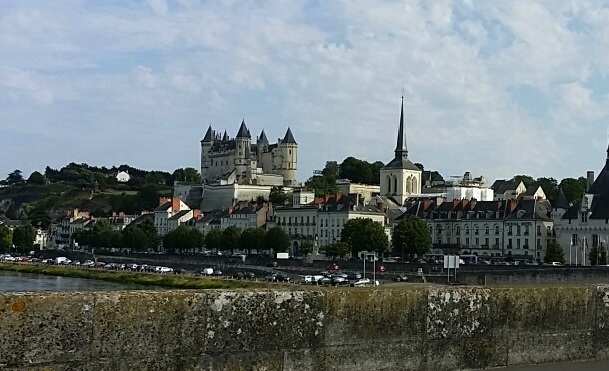
Moving down the Loire towards the sea you find the prominent varietal changes from mineral rich, citrus-driven Sauvignon Blanc to the floral and stone-fruit-filled Chenin Blanc. Though other regions in the world are known for their off-dry versions of this variety, Loire celebrates the dry style. Historically the best examples have been in the wines of Vouvray. Today we also experience stellar examples of dry Chenin Blanc in the emerging wines of Saumur. Both Vouvray and Saumur, like many parts of Loire, felt the brunt of European wartime devastation in both WWI and WWII when many historic properties fell into the hands of the Germans during WWII. Chateau buildings may have been spared during the war to be used by German commanders, but many, many vineyard sites were destroyed either by occupying German forces or Allies bombing the enemy. After the war the people of Loire faced another phase of starting over, as they had done many times, and as did all of Europe. But wine is in the roots of this region, and with tragedy comes strength and resilience, making post-war time wines that much more personal and important to the people of this area.
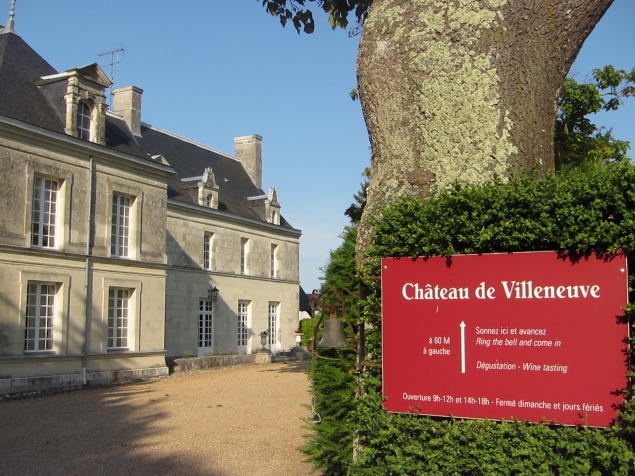
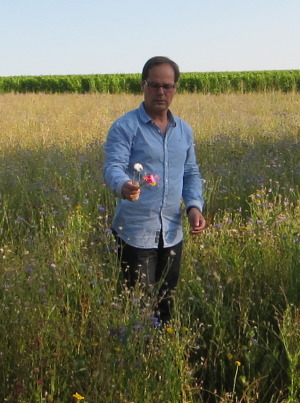
One such property was Chateau de Villeneuve a historic property outside of Saumur that dates back to the 1550’s. The Chateau was taken over by the Germans in WWII, only to have the historic property bombed by the Allies on June 13, 1940. While dining with owner/winemaker, Jean-Pierre Chevallier, he told stories that have been passed down to him by his father and outlined the personal struggles the family went through during and after the devastating war. Graciously, he presented a bottle of 1945 Chenin Blanc, which he opened it as a gift for his new American friends and to thank us for helping the Allies win WWII. Through tear-filled eyes we remarked on the lightness and vibrancy of the almost 70 year old sweet, botryitized wine that had rich texture, structure, and fresh acidity, remarkable for the age of the wine. These thriving vineyards, now farmed completely organically, also produce some of the finest still wines in Saumur, filled with wild flowers and stone fruit with chalky limestone creating interesting, special wines.
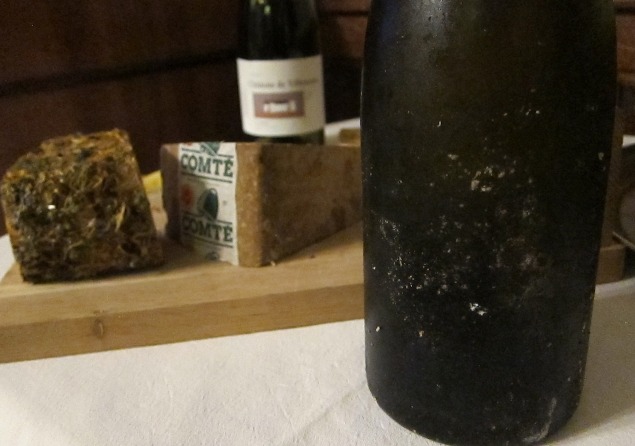
Towards the sea is the region of Muscadet famous for its seafood and shellfish friendly Melon de Bourgogne. The variety shines in this region for its briny quality, thanks to the influence of the Atlantic Ocean, as well as the overall fruit-forward, acidic palate. When enjoyed young, or shortly after bottling, the wine leaps from the glass with layers of citrus, pear and ripe peach with a slight saltiness. When the wine is enjoyed a touch older umami, balsamic notes meld with stewed and dried fruit, and earthiness. Though aging occurs only in tanks, the wine has creaminess and texture from aging them sur lie, or leaving the wine in tanks on the fine lees/yeasts with frequent stirring. This technique adds depth and richness, while softening the assertive, high acidity characteristics of the wine.
Interspersed within the still wines of Loire are sparkling and sweet wines such as Cremant de Loire and Sparkling Saumur wines, and sweet botryitized wines called moelleux, all often made with the Chenin Blanc base. The sparklers, made in the traditional method, are low alcohol in style with very delicate bubbles from a low level of pressure added during the second fermentation in the bottle. Botryitized sweet wines develop honey, creamy caramel and tangerine notes as the late-harvest fruit sits on the vines well into the harvest months, concentrating ripe fruit notes. And, though our trip focused only on the white wines of the region, I did sneak in a bottle or two of their Pinot Noir based Rose de Loire and slightly off-dry Rose de Anjou, each representing summer in a glass. Fresh and light, easy and uncomplicated, perfect for a summer day picnic in the Luxembourg Gardens in Paris.
Locally, most wine shops or spirits stores from Central Market to Sigel’s and Pogo’s have a nice selection of Loire Valley wines. A few key producers to look for include Champalou, a family owned and operated winery in Vouvray that was started in 1983 by Catherine and Didier Champalou, both from well-established wine families but who started their own label in Vouvray and have quickly risen to great acclaim and respect. The goal for the Champalou wines are to create highly aromatic Chenin Blanc filled with elegance and balance. Wines are delicate and restrained, showing the strength of the varietal when grown in optimal conditions. The Champalou Vouvray Sec (or dry) is filled with light honeysuckle and white flowers, ripe pear and stone fruit. $19.99 available at Total Wine and More.

Chateau Gaudrelle is known for producing high quality, yet approachable Vouvray. Established in 1931, the Chenin Blanc vineyards are ideally located between Tours and Amboise, with soils filled limestone and silica giving minerality and freshness to the wines that are vinified bone dry to very sweet. Chateau Gaudrelle Clos Le Vigneau Vouvray is just slightly off dry with honeysuckle, honeydew melon and sweet apricot notes with a touch of herbaceous floral notes. Fresh, easy and enjoyable now with the ability to age, as many Vouvray wines can. $19.99 at Total Wine and More.
Les Caves Monmousseau was founded in the 1880’s by Alcide Monmousseau in Montrichard near the Cher River. Here Alcide discovered an abandoned quarry of local tuffeau stone that was once used to build the magnificent castles of Loire, but had been unused for quite some time. He transformed these quarries into a winemaking cellar, benefiting from constant temperatures in both summer and winter, creating an ideal environment for both production and aging of wines. In the early 1900’s Justin-Marcel Monmousseau, the nephew and successor of Alcide, capitalized on the similarities between Champagne and Loire, transforming the winery into a leading, traditional method, sparkling wine house. Today Les Caves Monmousseau is a leader among sparkling wine producers in Loire, producing high quality yet rather affordable sparkling wine, as well as a selection of still wines from areas throughout the region. Monmousseau Etoile Brut is made from predominantly Chenin Blanc, with a touch of other local varieties like Chardonnay added to the blend to round out the wine. Aged for 12 months on the yeasts prior to disgorgement, the wine is filled with white peach, pear and honey, perfect as an aperitif to start an evening. $14 at La Cave Warehouse.

The Crochet family has been growing vines in Loire since the 16th Century, with generation after generation following in their father’s footsteps. Jean Marc and Mathieu Crochet work their 30 acres of vines in the village of Bue, focused mainly on growing floral, mineral rich Sauvignon Blanc, with a touch of juicy, red fruit filled, balanced Pinot Noir on 5 of the 30 acres. Soils in the region are filled with limestone, chalk and clay, adding intense, characteristic minerality to the wines, accentuating notes of tropical fruit, citrus, and soft herbs in their Crochet Sancerre. Incredible paired with fish or seafood dishes. $36.99 at Pogo’s.
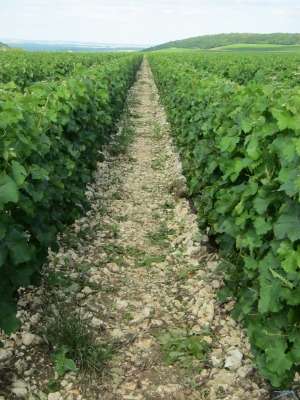
Pascal Jolivet Sancerre is an approachable, clean and bright wine, a great choice if you are just starting to try the wines from the region. Lively and fresh with distinct layers of lemon, gooseberry and peach, balancing herbal and floral notes with a youthful palate and soft finish. $25 at Total Wine and More.
Domaine Herve Seguin Pouilly-Fume shows the smokier side of Loire Valley, filling the glass with wet stone, grapefruit, lemon, a touch of saline and gun-smoke. Layered and expressive, an interesting wine that shows the wines ability to age. Select Sigel’s stores have the 2010 vintage available now, and now is the perfect time to enjoy it as the wine shows best after a few years of bottle aging. $24.99 at Sigel’s.
Forty year old Melon de Bourgogne vines are the base of Domaine de la Pepiere Muscadet Serve et Maine sur Lie, a clean, bright and very fresh, native yeast fermented Muscadet from the region of Loire closest to the ocean. The crisp and elegant wine sees an extended lees aging to add richness and softness to the high acid wine. Filled with tree fruit, lemon, honeysuckle and spice with just a touch of the salinity and minerality that comes from the Atlantic ocean influence on the wines. $17 at Pogo’s.
If you like an aged, slightly sweeter Chenin Blanc wine, La Cave Warehouse has a nice selection of Baumard Quarts de Chaume some of which date from 2005 back to 1989 and are filled with ripe melon, dried apple and white peach notes wrapped in layers of spice and honey, priced from $40 for the 2005 375ml bottle.



